|
HOME: www.hiltonpond.org |
|||
THIS WEEK at HILTON POND Subscribe for free to our award-winning nature newsletter (Back to Preceding Week; on to Next Week) |
AUTHOR'S PREFACE: Next Sunday (15 Sep 2013) will mark my 67th birthday. Facebook once provided "Birthday Causes" through which a celebrant could name a favorite charity to which supportive FB friends donated. In the hope you have inclination and ability to help I'd still like to designate Hilton Pond Center as my "Birthday Cause" for 2013. If you find my postings--especially "This Week at Hilton Pond"--to be informative or just fun to read, or if you've learned something about hummers through Operation RubyThroat, please consider granting my "Birthday Cause" wish by making a tax-deductible donation via PayPal or Network for Good (see links below), or by check (1432 DeVinney Road, York SC 29745). The goal is to have $1,000 by 15 Sep and $3,500 by the end of the month. I hope you can help. And thanks for letting me share my love of nature with you! BILL HILTON JR. All contributions are tax-deductible on your TREES AND TRANSIENTS NOTE: We enjoy alliteration, but when it came time to title this week's photo essay we just couldn't decide. The installment is about trees and migratory birds at Hilton Pond Center, so our first thought was "Trees And Transients." But at least one of the birds is non-migratory and another's a possible local breeder, meaning neither would be temporary residents. That shifted us to "Wood And Warbler," what with trees being woody plants and fall migrants often being warblers. Alas, one of the birds is NOT a warbler, so that title wasn't quite accurate either. Pondering further we couldn't come up with anything else, so we'll just let you choose a title you like.
All text, maps, charts & photos © Hilton Pond Center First, the trees. When we moved in 1982 to what we now call Hilton Pond Center, we were pleased that right outside our new office window was a one-foot-diameter Shagbark Hickory, Carya ovata, whose branches were already reaching 50 feet or so into the canopy. We've always been enamored of this stout species with namesake bark that in older individuals peels away in long, thick, curly strips (above). Over three decades the slow-growing tree has almost doubled its diameter and has added perhaps 20 feet in height. Each fall we admire our splendid Shagbark Hickory but also have a degree of consternation over its ability to cause bodily damage as we walk beneath its limbs.
All text, maps, charts & photos © Hilton Pond Center Yes, in autumn the big hickory produces two-inch diameter fruits that become lethal projectiles when falling from lofty heights. This year the tree has yielded the biggest crop of hickory nuts we can remember (above); now we must fear not only cranial concussions but also can barely walk the ground beneath the tree--lest we tumble on the jumble of two-inch nuts that litter the substrate. A trip outside is like a stroll through giant marbles capable of ankle-twisting, and there are so many nuts our resident population of Eastern Gray Squirrels is unlikely to make a dent in this bounty anytime soon.
All text, maps, charts & photos © Hilton Pond Center At present the Shagbark Hickory nuts are covered with a thick green husk that will turn brown, dry, and pop open to eventually reveal a hard-shelled fruit within (above). Impatient squirrels have already nibbled many of the husks to get at tasty nutmeats, but it will be a month or more before the rest of the husks dry and make the nuts more accessible. Until the squirrels harvest the hickory nut cornucopia of 2013 we will move gingerly through this backyard minefield.
All text, maps, charts & photos © Hilton Pond Center The big Shagbark Hickory is not our only local tree that threatens humans. Right over the old farmhouse towers another somewhat younger Black Walnut, Juglans nigra, whose spherical nuts at 3" in diameter are even bigger and potentially more lethal than those of the hickory. In the photo above, two walnuts dangle ominously from twigs while long slender petioles--now devoid of the 15 to 23 leaflets that comprise a walnut's compound leaf--radiate like antennae. This abstract image does not do justice to the potential deadliness of a walnut dropping from 40 feet--as we know first-hand from being whomped on the shoulder by one a few years ago. (A painful bruise ensued.) About 30 minutes after taking the photo we were working in the office when a loud BLAM! destroyed the silence. It seems one of those very walnuts had plummeted from the treetop twig and landed squarely on the metal roof right above our computer desk. BLAM! To say this unexpected noise was loud would be an understatement, but it wasn't so loud we couldn't think clearly enough to hypothesize what was going on.
All text, maps, charts & photos © Hilton Pond Center As soon as our hearing returned we went out with camera to investigate the validity of our suspicions and, sure enough, up in the Black Walnut tree was an Eastern Gray Squirrel we guessed would be conducting its fall harvest (above). As we watched, the bushy-tailed tree rat went from limb to limb and bit through the stem that attached a walnut to its twig, all while trying to grab the big nut with its forepaws. Most of the time the nut was just too large to handle and the squirrel lost its grip--resulting in bombs-away. BLAM! After cutting loose a half-dozen walnuts the squirrel finally was able to grasp one long enough to dig in with its teeth. Then it scampered away through the canopy to some unknown destination--perhaps its winter lair. With such activity we're hoping walnuts won't be on the tree much longer--but none too soon as the idyllic silence of our office is still being interrupted by even more BLAMS!
All text, maps, charts & photos © Hilton Pond Center Although there's one other tree at Hilton Pond Center that makes big fruit, it isn't nearly as life-threatening as the Shagbark Hickory or Black Walnut. We speak here of the Red Buckeye, Aesculus pavia, a charming little woody plant of which we have two specimens. One we placed in the ground about six years ago, and the other has been sitting right beside it in a one-gallon pot for the past three years. You might know the one in the ground has remained scrawny and never bloomed, but in April 2012 the seemingly vigorous potted plant produced its first tubular red flowers (above) that were visited frequently by Ruby-throated Hummingbirds. (We're sure the tree in the pot is root-bound by now, but because it bloomed we hesitate to move it.)
All text, maps, charts & photos © Hilton Pond Center This flowering Red Buckeye yielded no nuts in 2012 but after blooming this year developed four irregularly shaped 2.5-inch long fruits (above) that seem 'way to big for a three-foot-tall tree. These nuts weigh down the twigs considerably but pose no danger to human passersby because they're only a foot or so above ground. If what we read is correct and local rodents don't get to them, the green husks will eventually dry and crack open to reveal one or more shiny brown buckeyes within. We'll be waiting and will try to beat the squirrels to them, all in the hope planting Red Buckeyes around Hilton Pond to attract even more hummingbirds in spring.
All text, maps, charts & photos © Hilton Pond Center One tree whose fruit will never threaten humans through gravity-induced injury is Flowering Dogwood, Cornus florida. The trees at Hilton Pond Center are just beginning to produce fruit--a little surprising when we consider they offered showy white bracts almost six months ago in mid-April. Dogwood's 3/8" berry--actually a "drupe" in which a fleshy mesocarp surrounds the seed within a shell--starts out tiny and green (above) and fattens into that familiar scarlet fruit sought by birds and squirrels alike. Most of the Center's dogwood drupes never make it to the ground because of industrious Eastern Chipmunks small enough to go far out on thin branches where ripening fruits await. (Incidentally, when we first looked at the berry cluster in the photo above we thought it contained only five fruits in various stages. After further review we see that there's a potential for as many as ten additional drupes to develop. What's also interesting is you can see remains of the sepals and pistil at the distal end of each fruit--similar to what one finds on the bottom of an apple.) That's it for woody trees. Now to the birds.
All text, maps, charts & photos © Hilton Pond Center When Ernesto Carman Jr. visited from Costa Rica back in early May, we caught quite a few spring migrant birds in mist nets. Alas, day-after-day precipitation followed soon after his departure and summertime net deployment was curtailed. Now that rains have debated and autumn is on the way, it's time to open nets again in the hope of capturing fall migrants winging their way to the Neotropics. Although we've seen no big movements yet, one day this week we did snare a species we sometimes see but seldom band at Hilton Pond Center--a Black-throated Green Warbler (above and below). Based upon plumage (including insufficent dark feathers on the throat and little side streaking) we classified the bird as an immature female.
All text, maps, charts & photos © Hilton Pond Center Black-throated Green Warbler, formerly Dendroica virens and now Steophaga virens, is one of those Wood Warblers (Parulidae) that breeds in North America and spends the cold months south of the border. The species nests in disjunct locations with dissimilar vegetation: Coniferous forests of eastern North America and western Canada and--oddly enough--Baldcypress swamps of the South Atlantic Coast. According to South Carolina's Breeding Bird Atlas there are confirmed nesting records from Georgetown County on the Atlantic Coast and Greenville County on the North Carolina border. These populations appear to be "declining precipitously," likely because of habitat loss that includes widespread damage from Hurricane Hugo in 1989.
All text, maps, charts & photos © Hilton Pond Center Black-throated Green Warblers fall into that category of parulids that includes birds with "wing bars and tail spots" (see above)--two of the field marks useful in identifying many warblers to species. That said, we find BTGW to be very distinctive and not to be included in the so-called "confusing fall warbler" designation. We had sightings of Black-throated Green Warblers this spring at the Center, but this week's capture was only our 18th since 1982. We suspect this individual was a true migrant from up north and not from South Carolina's breeding locales in Greenville or Georgetown counties.
All text, maps, charts & photos © Hilton Pond Center Our second likely migrant was also a parulid, this time a little brown and white bird that looks more like a thrush than a warbler.
All text, maps, charts & photos © Hilton Pond Center We say the Ovenbird we netted is a "likely migrant" at Hilton Pond Center because this species--like the Black-throated Green Warbler--also breeds in South Carolina, albeit sparingly. The biggest summer population is in northeastern and north central North America (wintering primarily in Central America and Florida), but it is reported as nesting in Chester County SC--the county just to the south of us in York. Out of 223 Ovenbirds banded at the Center in 32 years we've never had a recent fledgling or a female with a brood patch, so we don't think they breed locally and chalk this up as yet another bird enigma that needs more study.
All text, maps, charts & photos © Hilton Pond Center Our third bird this week worthy of particular mention was an immature White-breasted Nuthatch (above). We called her a female because of her pale cap; those of males are typically black. In the world of birds one can never be 100% positive about anything, but we're almost certain this individual was NOT a migrant. In the case of WNBU we've banded breeding females and fledglings, although not many or either; the total for all ages and sexes stands at 21 since 1982. (In the photo above, note the long, straight, bi-colored bill in which the lower mandible is slightly boat-shaped.)
All text, maps, charts & photos © Hilton Pond Center The scientific name of White-breasted Nuthatch is Sitta carolinensis, although we've always thought that particular species epithet should go to its more southerly relative, the Brown-headed Nuthatch, S. pusilla. WBNU breed virtually everywhere in North America except the Great Plains and eastern Mexico, while BHNU are limited strictly to the southeastern coastal states from Texas to Maryland. However, as has happened with many bird species, S. carolinensis was so-named because the first specimen was seen or collected in the Carolinas. (In this case, John Latham--an English naturalist who was the "father of Australian ornithology"--came up with carolinensis in 1790.) As shown in the photo just above, White-breasted Nuthatches have surprisingly long pointed wings and rather short tails with prominent white spots.
All text, maps, charts & photos © Hilton Pond Center Another interesting morphological characteristic of the White-breasted Nuthatch is its foot (above). This appendage is typical for a songbird (anisodactyl, with three toes in front and one behind), but the exposed tarsus is short and the hallux is especially long and with a large decurved claw--a nice combination that allows nuthatches to hang head-down while clinging to bark on vertical tree trunks. Unlike woodpeckers that usually move UP a trunk, nuthatches forage from an inverted position--which undoubtedly allows them to look down into bark crevices where other birds might not be able to reach potential food items. So there you have it: "Trees and transients" or "wood and warbler"--our photo essay about some woody plants and birds (warblers or not, migrant and otherwise). Although all were observed this week at Hilton Pond Center, we suspect you can see the same or similar in your own neck of the woods. All text, maps, charts & photos © Hilton Pond Center All contributions are tax-deductible on your |
|---|
|
"This Week at Hilton Pond" is written and photographed by Bill Hilton Jr., executive director of Hilton Pond Center for Piedmont Natural History
|
|
|
Please refer "This Week at Hilton Pond" to others by clicking on this button: |
Comments or questions about this week's installment? Send an E-mail to INFO. (Be sure to scroll down for a tally of birds banded/recaptured during the period, plus other nature notes.) |



 This was a great way to raise funds for Hilton Pond Center & Operation RubyThroat, but FB has canceled the program. We still need operating funds, however, especially in a year that brought unexpected big expenses. (For example, we lost the Center's storage shed to termites and carpenter ants, and our much-used observation deck is about to suffer the same fate. A trusty 28-year-old garden tractor that maintained our walking trails just bit the dust. We had to cancel numerous Guided Field Trips to Hilton Pond because of all that rain, and our annual hummingbird research trip to Costa Rica was scrubbed when I caught pneumonia. Expenses have been considerable, and it's only September!)
This was a great way to raise funds for Hilton Pond Center & Operation RubyThroat, but FB has canceled the program. We still need operating funds, however, especially in a year that brought unexpected big expenses. (For example, we lost the Center's storage shed to termites and carpenter ants, and our much-used observation deck is about to suffer the same fate. A trusty 28-year-old garden tractor that maintained our walking trails just bit the dust. We had to cancel numerous Guided Field Trips to Hilton Pond because of all that rain, and our annual hummingbird research trip to Costa Rica was scrubbed when I caught pneumonia. Expenses have been considerable, and it's only September!)
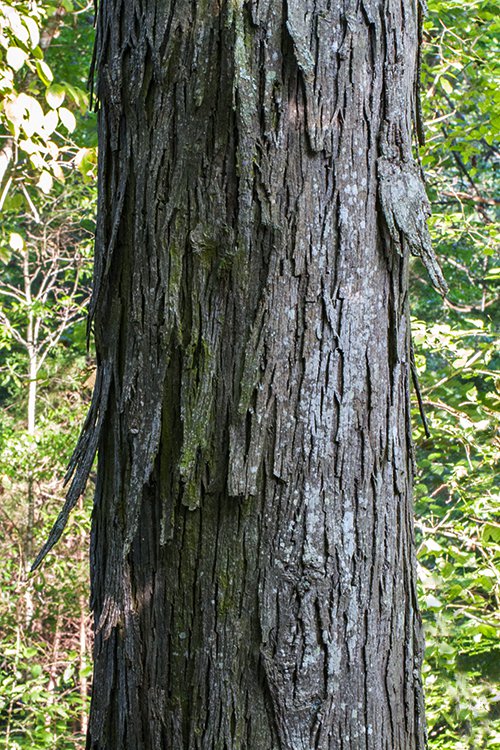
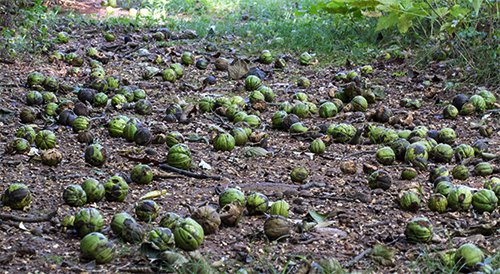
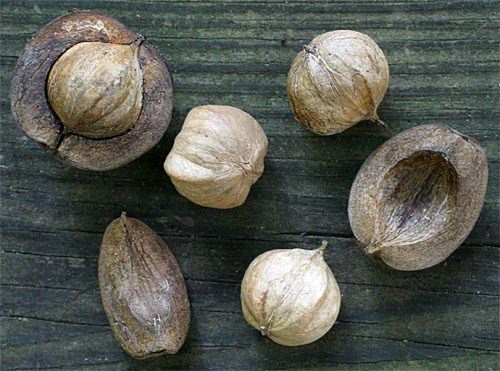
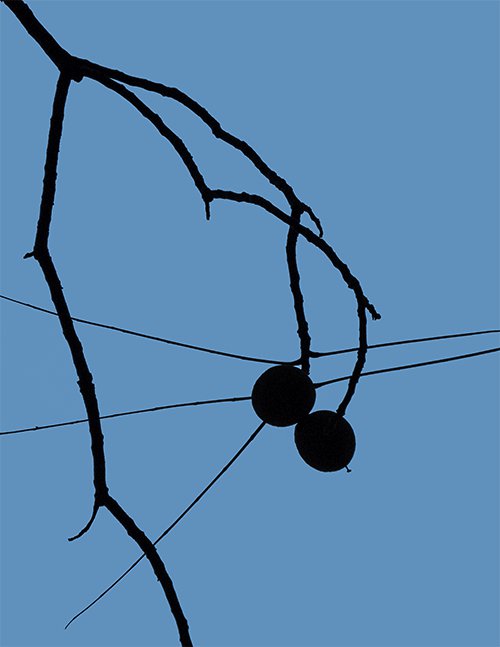
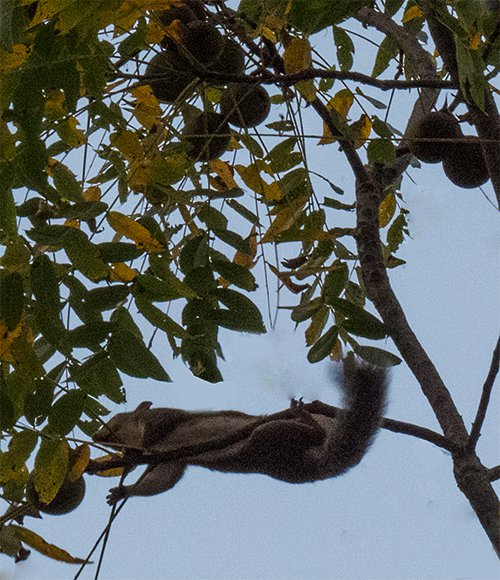
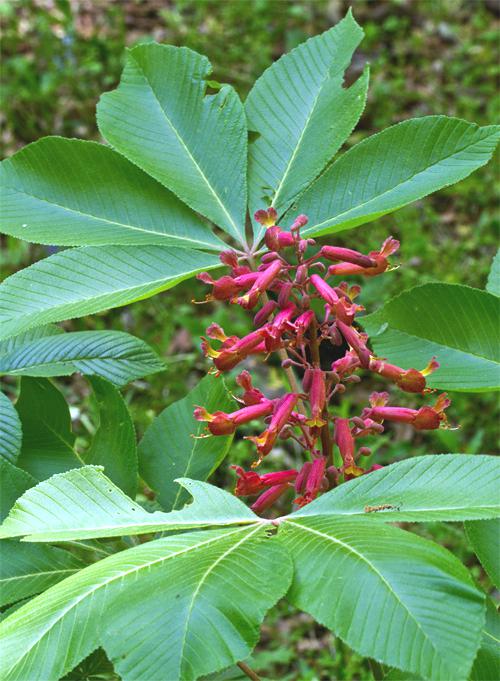
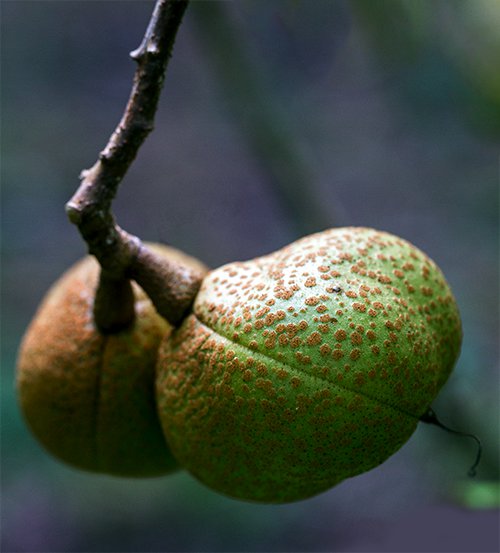


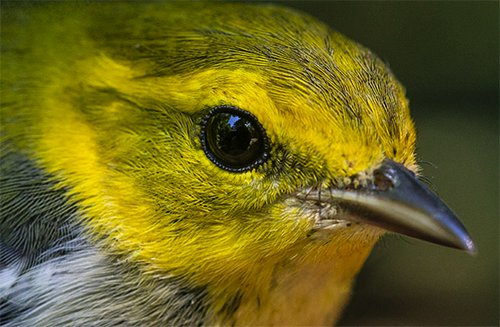
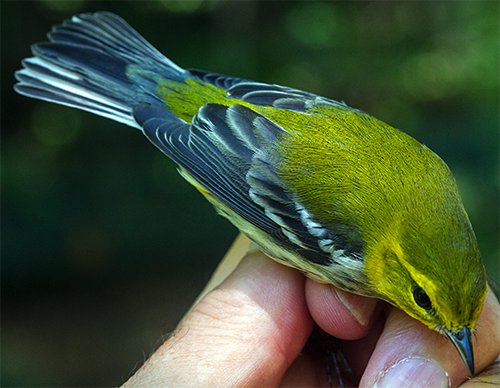
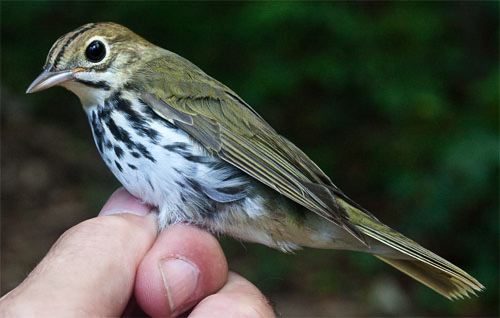
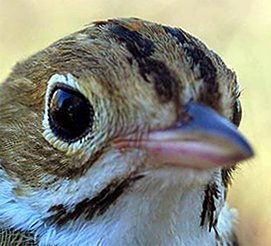 The big white eye ring and dark head stripes
The big white eye ring and dark head stripes 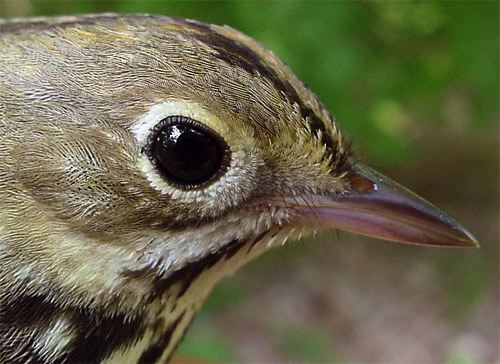
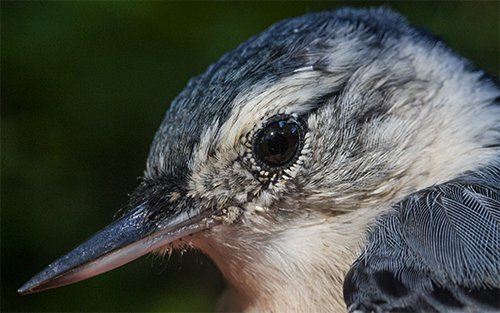
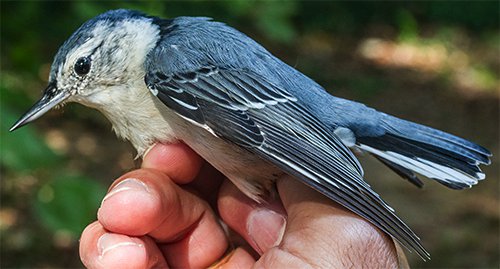







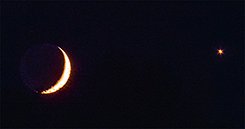

 Please report your sightings of
Please report your sightings of